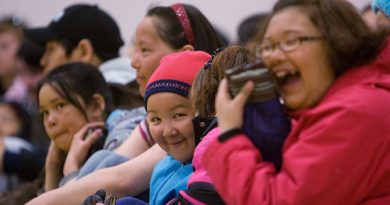Canada's Arctic Rescuers Not Based in North
 Search and rescue crews that conduct Arctic rescue missions are based nowhere near the Arctic, according to the Conference Board of Canada.
Search and rescue crews that conduct Arctic rescue missions are based nowhere near the Arctic, according to the Conference Board of Canada.
Because the technicians are based so far from the remote areas they are supposed to serve, it can take hours or longer for help to come to remote parts of Nunavut, the Northwest Territories or Yukon, according to the Centre for the North, the conference board’s northern policy think-tank.
“Lots of analysts are talking about this. They think that there is a real gap here, that there should be a base that’s located closer to the North so that when those incidents do occur, help can arrive faster,” centre director Derrick Hynes told CBC News on Monday.
Every military aircraft deployed to a search and rescue mission in “remote or hard-to-reach areas” includes two search and rescue technicians who are trained to rescue and provide medical attention to those who need help, according to the federal Defence Department.
Based in provinces
Nearly all of the country’s search and rescue technicians are stationed in Canadian Forces bases in the southern provinces, with the majority based at CFB Trenton, Ont., Comox, B.C., and Greenwood, N.S., according to a map published on the centre’s website on Monday.
Aerial view of the ice near Coral Harbour, Nunavut, where search and rescue technicians rescued a 17-year-old boy from an ice floe in November 2009. (Joint Rescue Co-ordination Centre Trenton)Of the three bases, CFB Trenton covers most of the North — all of the N.W.T. and most of Nunavut — but it is almost geographically closer to Quito, Ecuador, than it is to Alert, Nunavut, according to the conference board.
CFB Greenwood covers not only the Atlantic provinces but also part of northern Quebec and the southern half of Baffin Island in Nunavut. CFB Comox provides rescue services in Yukon as well as British Columbia.
“We’re talking about basic geography here,” Hynes said. “If a helicopter has to travel from Greenwood, N.S., to somewhere near Iqaluit, that’s going to take a long time. And certainly that can’t be denied.”
CFB Greenwood is about 2,100 kilometres south of Iqaluit, according to Natural Resources Canada’s database of geographical names.
Some search and rescue technicians are also based in Winnipeg, Man., and Gander, N.L., and a total of 12 technicians are posted to what are considered “northern” bases — Goose Bay, N.L., Bagotville, Que., and Cold Lake, Alta.
Members of the Canadian Rangers, a military reserve group consisting of trained residents in northern communities, do provide support during search and rescue operations.
But the absence of trained search and rescue technicians in the North will pose a challenge as northern economies grow and more marine and air traffic are expected in the Arctic, according to the conference board.



